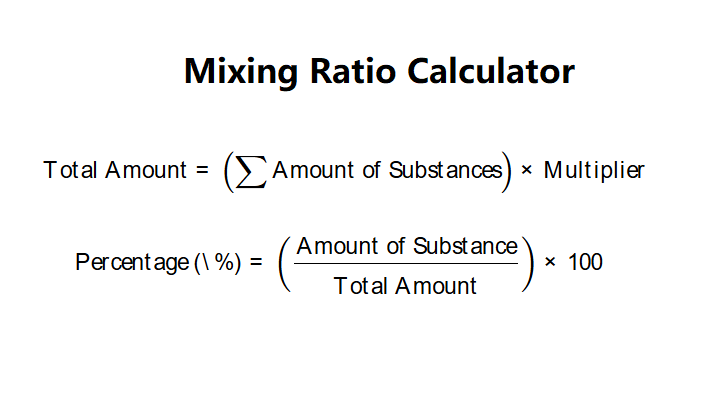 Home
Home
 Back
Back

Mixture Composition Calculator computes the percentage composition of a mixture based on the amounts (mass or volume) of its substances.
It is widely used in chemistry, food science, and material science to determine the proportion of components in a mixture.
Input the amounts of up to 15 substances (using the same unit for mass or volume) and an optional multiplier. The calculator uses the following formula:
Click 'Calculate' to see the total amount and percentage composition of each substance.
Example 1: Substance 1 = 45, Substance 2 = 23.5, Substance 3 = 0, Multiplier = 1.
Calculation: Total Amount = (45 + 23.5 + 0) × 1 = 68.5, Percentage 1 = (45 / 68.5) × 100 ≈ 65.69%, Percentage 2 = (23.5 / 68.5) × 100 ≈ 34.31%
Example 2: Substance 1 = 10, Substance 2 = 20, Multiplier = 2.
Calculation: Total Amount = (10 + 20) × 2 = 60, Percentage 1 = (10 / 60) × 100 ≈ 16.67%, Percentage 2 = (20 / 60) × 100 ≈ 33.33%
Enter values and click 'Calculate' to verify.
1. What is mixture composition?
Mixture composition is the percentage of each substance in a mixture based on its mass or volume contribution.
2. Why use the same unit?
All substances must use the same unit (e.g., kg or liters) to ensure accurate percentage calculations.
3. What does the multiplier do?
The multiplier scales the total amount, useful for adjusting the mixture size without changing proportions.
4. What if a substance amount is zero?
Zero values are ignored in the calculation, affecting only the substances with positive amounts.